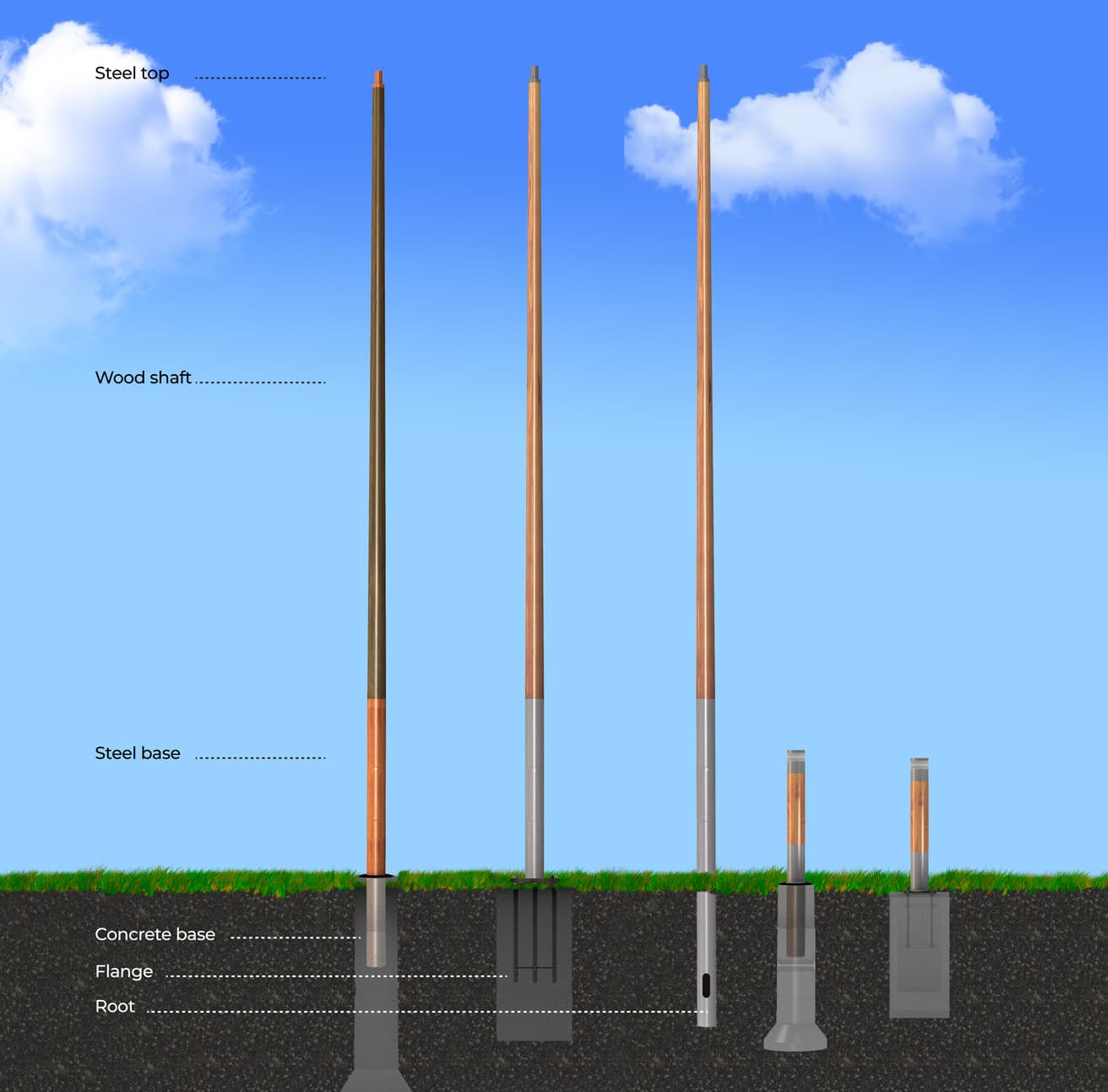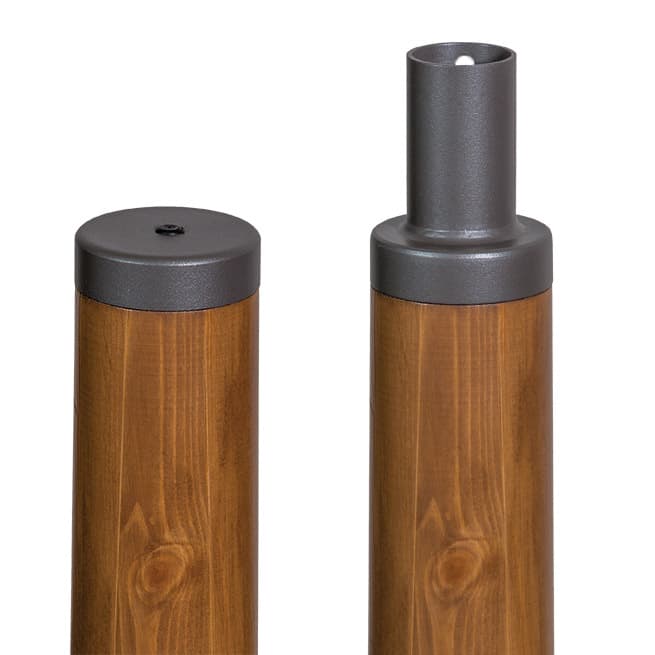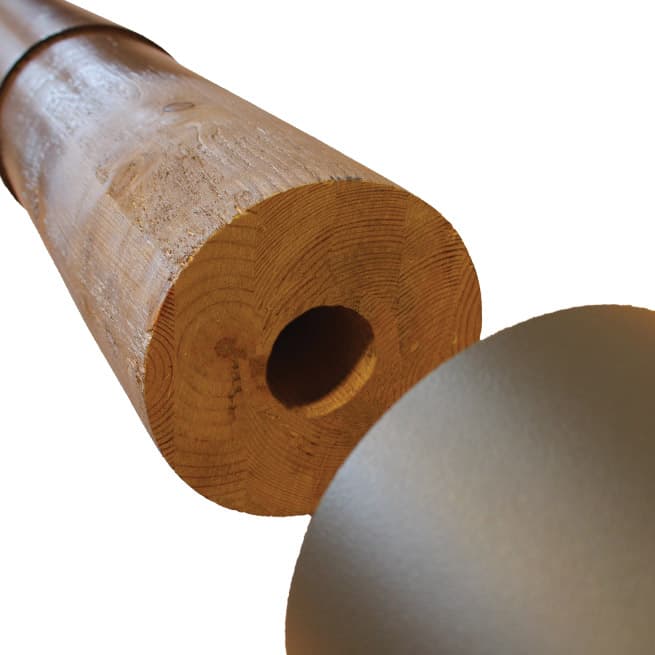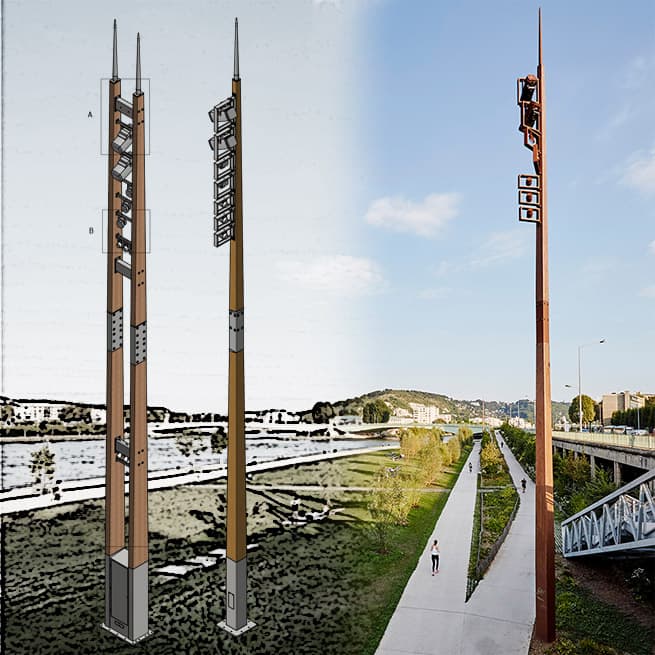The structure of a wooden pole
The basic structure of a wooden light pole is very similar to that of a steel pole.

The distance between the wooden section and the ground is typically 50–100 mm.The lowest section of the pole is made from galvanised steel. This reduces the transfer of moisture from the ground to the wood.
Steel top section
Our poles always have a steel top section: a spigot adapter for pole-top installations, an end cap for shaft-mounted arms, or a short horizontal spigot adapter.
The standard dimensions of spigot adapters are diameters of Ø60 and Ø76 and lengths of L=70 and L=100. Other dimensions are special order items.

Wooden section
The shaft of our wooden poles is made of strength-graded glued laminated timber that has been glued with the heartwood facing outwards to minimise cracking. The shafts are either CNC-processed or planed into their final shape. Holes for cabling are drilled through the poles before they are shaped. During assembly, the poles are equipped with a cable pull to facilitate wiring.

Steel base
In practice, all of our products can either be installed using a foundation or equipped with a flange plate for installation with anchor bolts. The steel components of the pole are hot-dip galvanized and powder coated to ensure both a long service life and a sophisticated appearance.
The base section of a wooden pole will typically be thicker than that of a metal pole of the same height. This facilitates the installation of equipment by providing plenty of room for a large connection compartment behind a flush-mounted door. If necessary, a pole can have two or more handholes.

Extra-long products
These products have dimensions that are impractical in terms of logistics. For example, high masts will typically be designed and manufactured using joints in the central sections of the shaft. The joints for these steel sections enable the construction of impressive and functional structures that are also visually interesting, as the joints can mirror the finish of other steel sections.
A good example is the 25-meter high wooden masts supplied by Tehomet in Rouen, France.
Tehomet manufactured a total of one single-hulled and eight double-hulled giants for the Seine shore landscape.
The high masts consist of two wooden frames connected by a steel joint. The dimensions of the Rouen high masts are huge: an adult-sized door leads into the service space of the two-frame mast!
